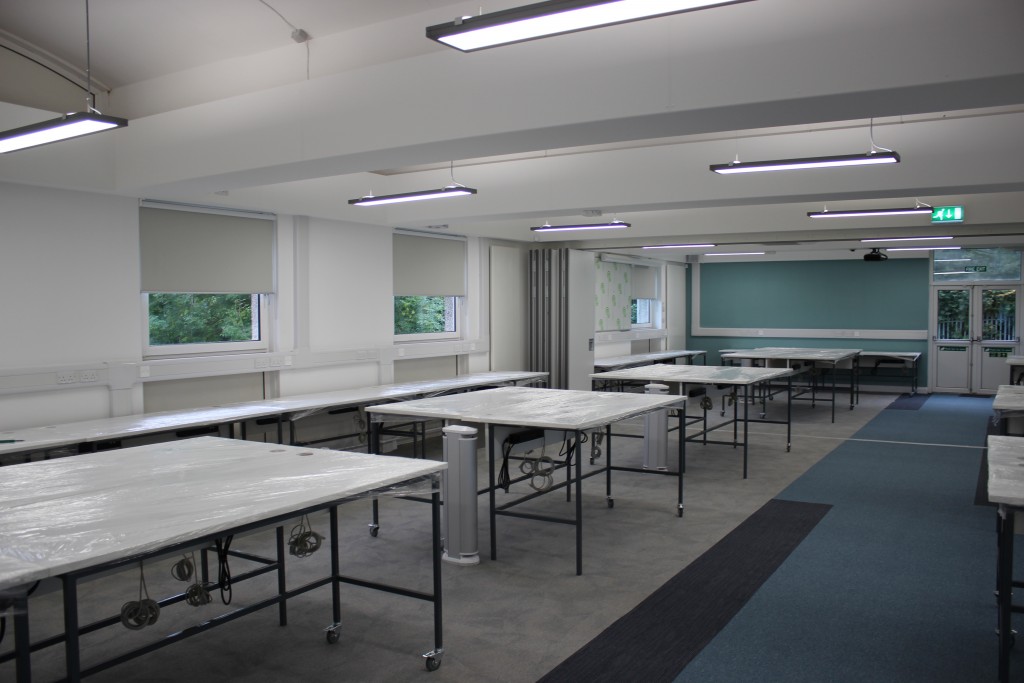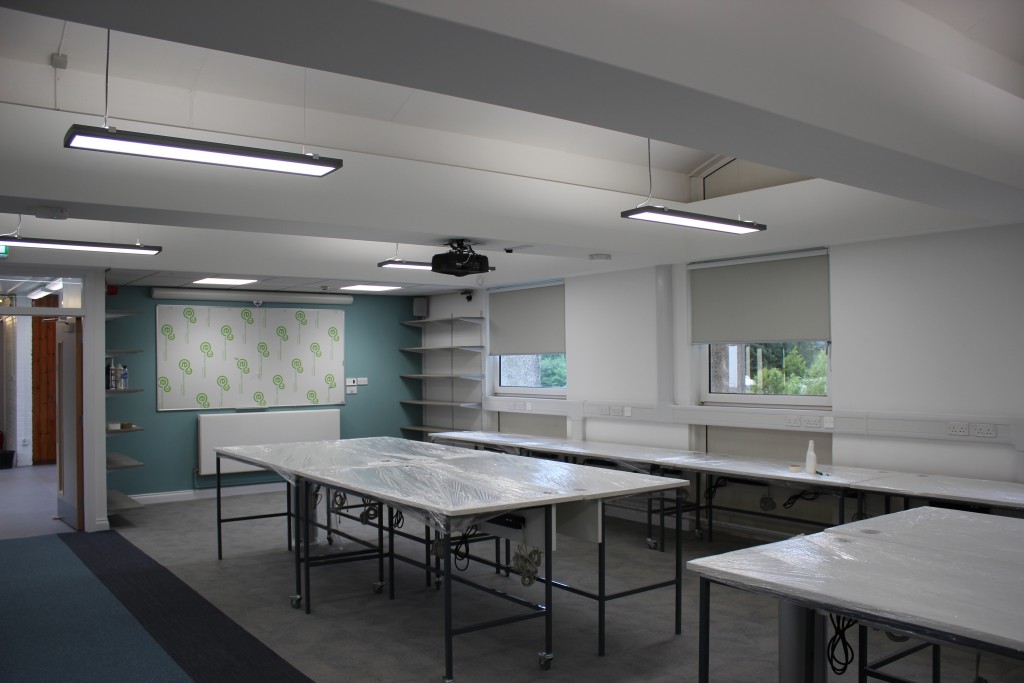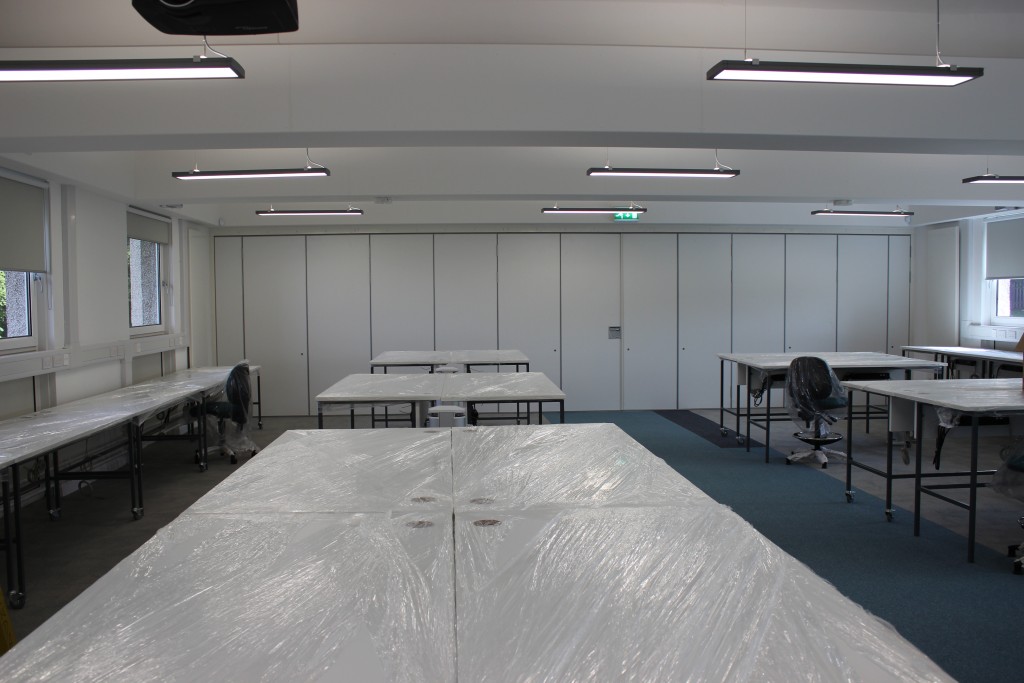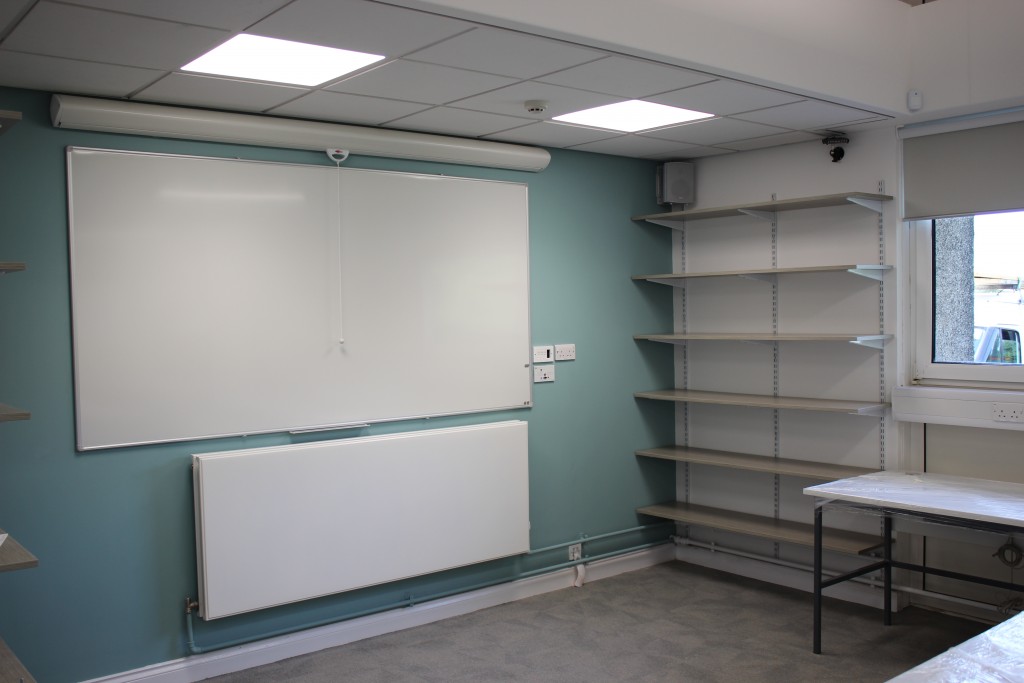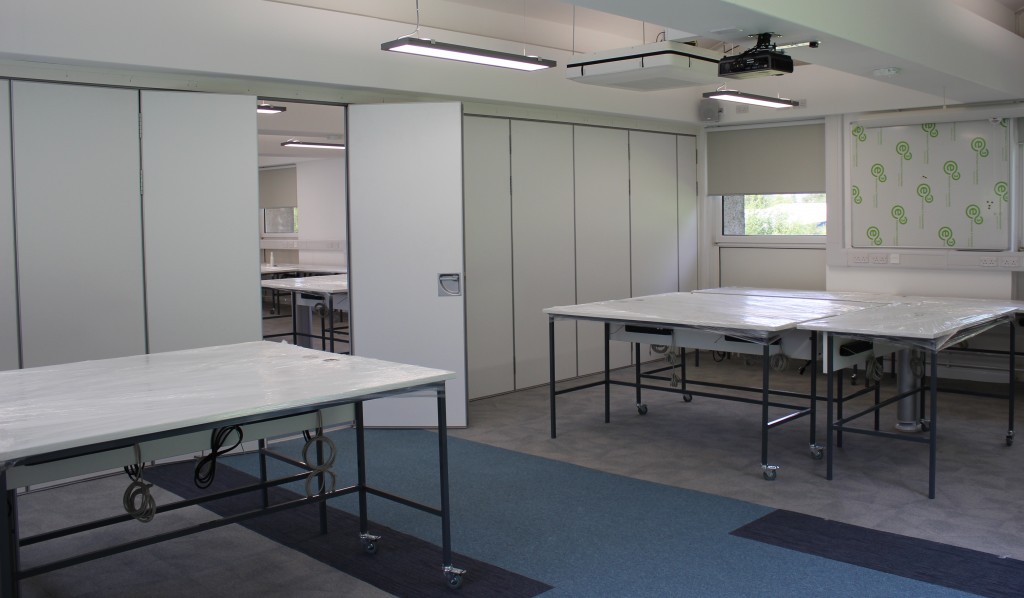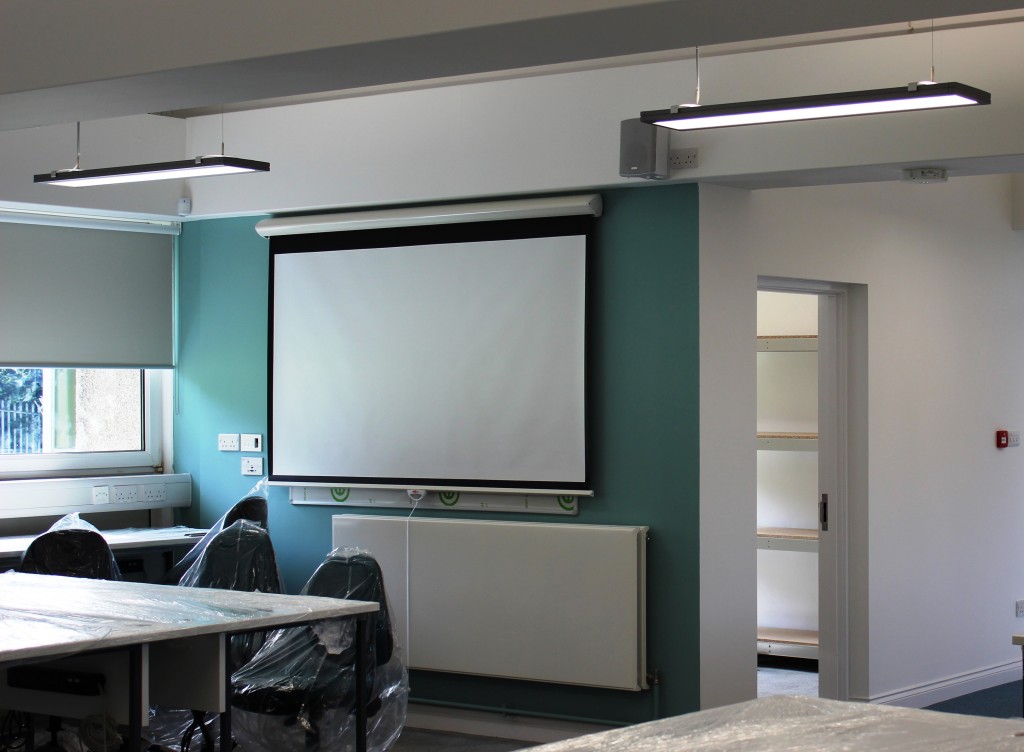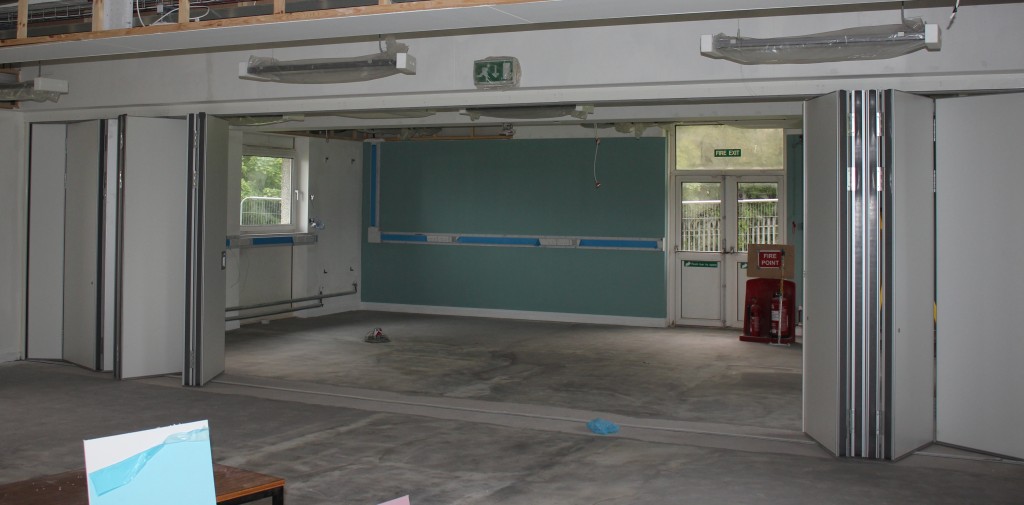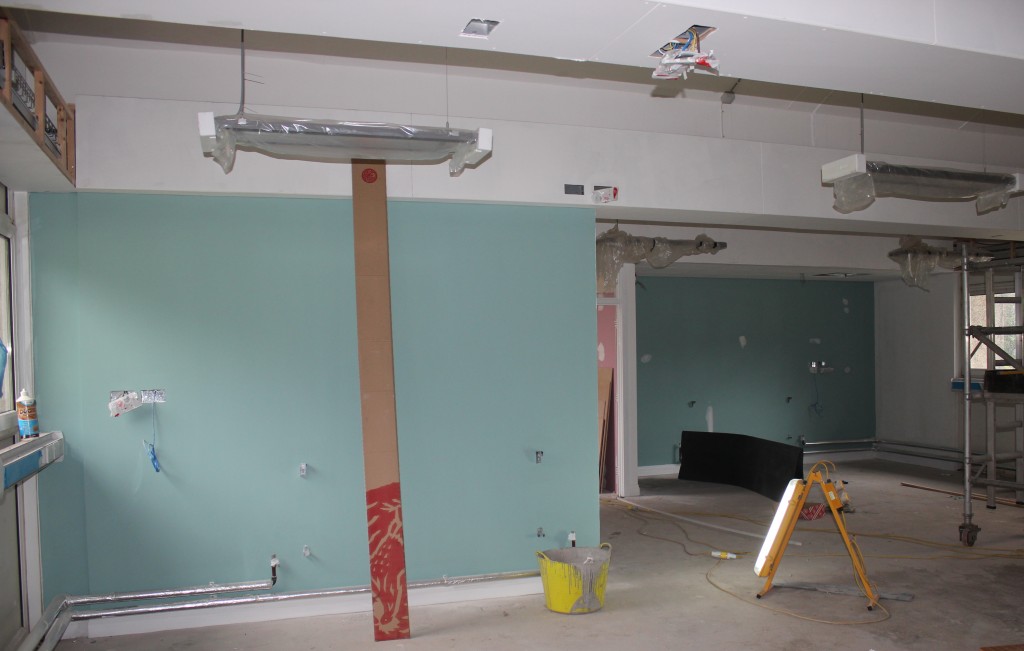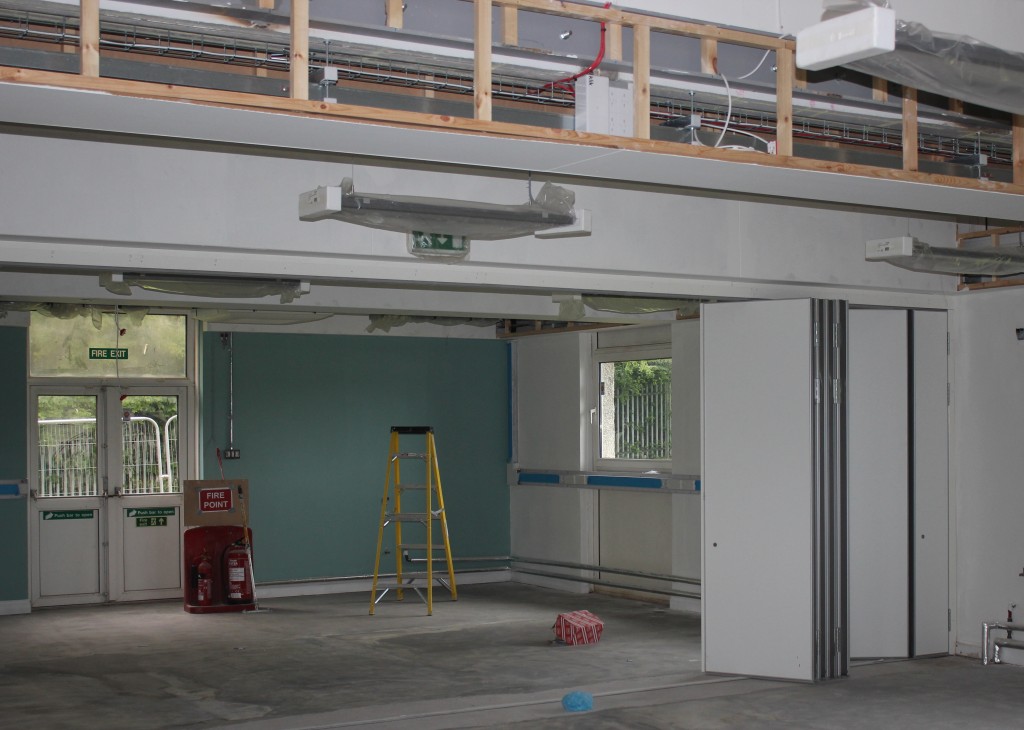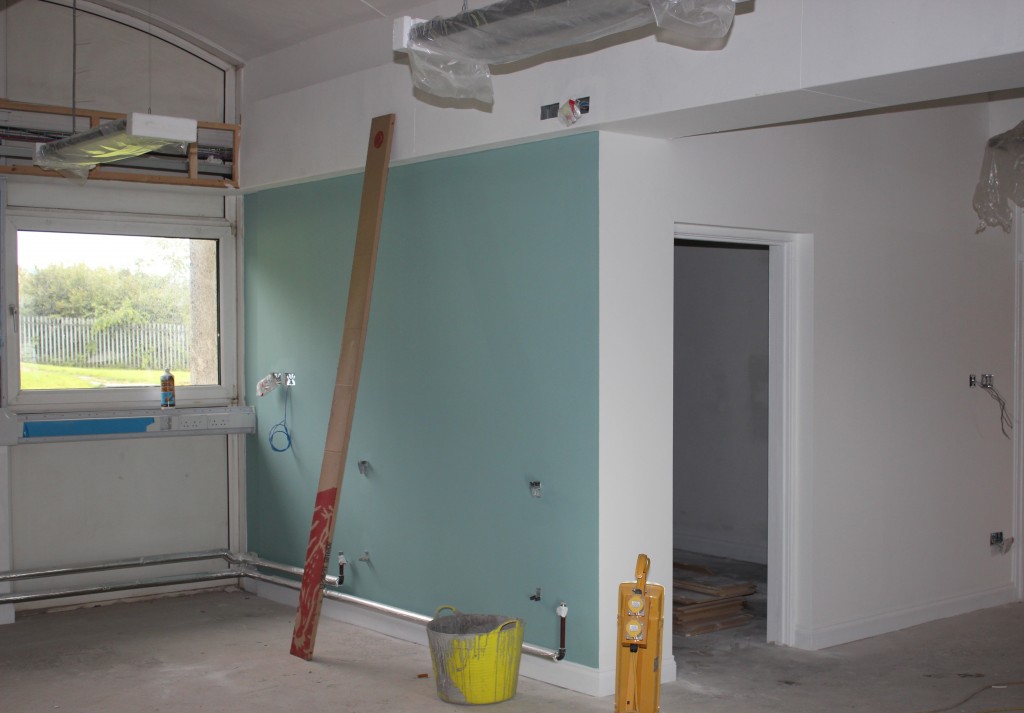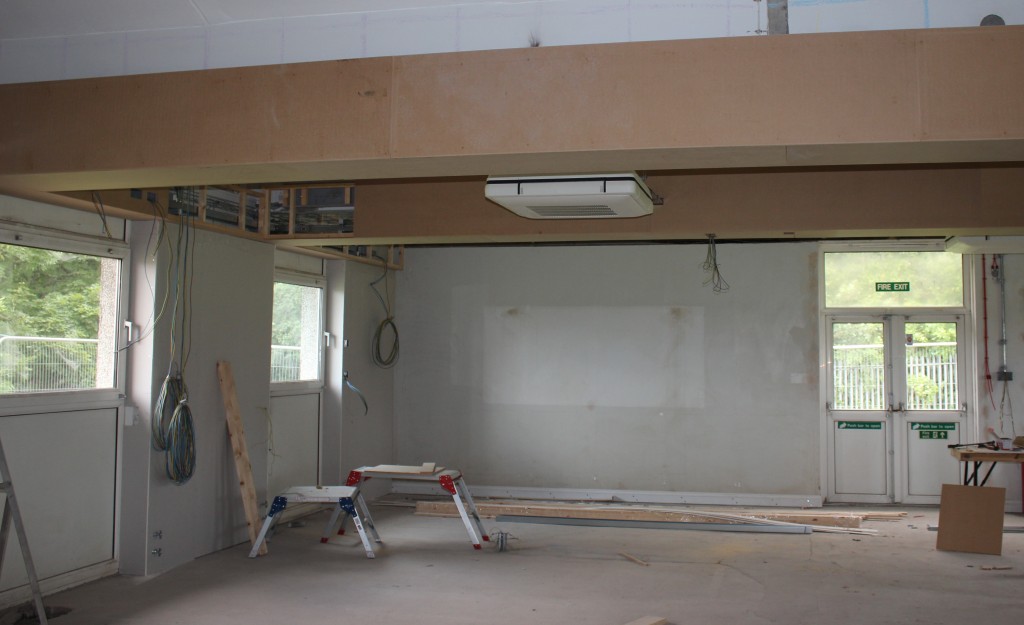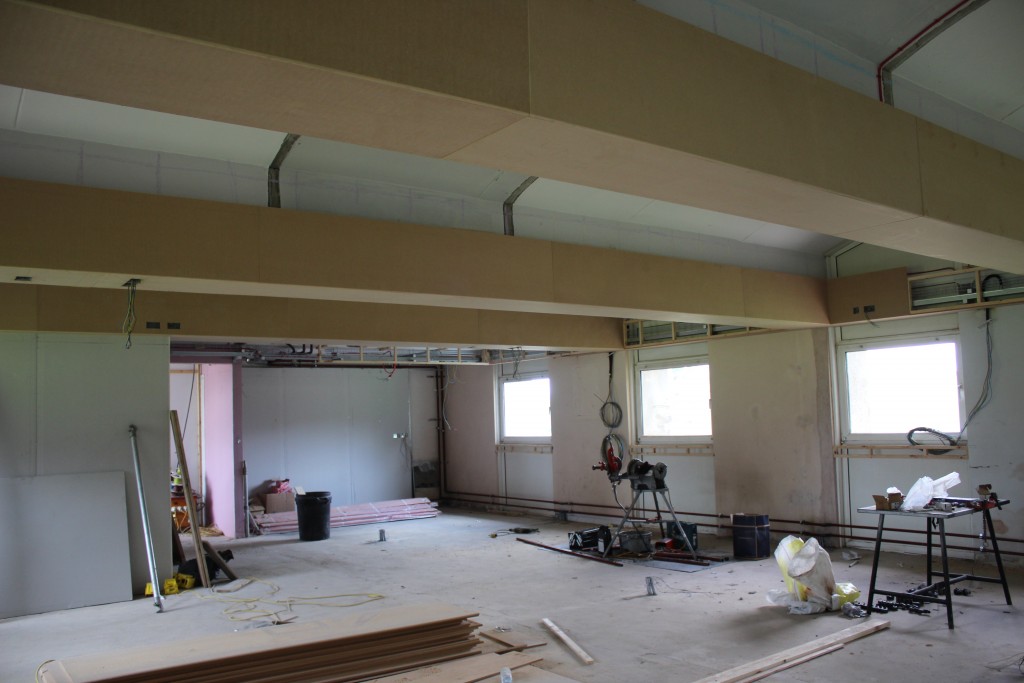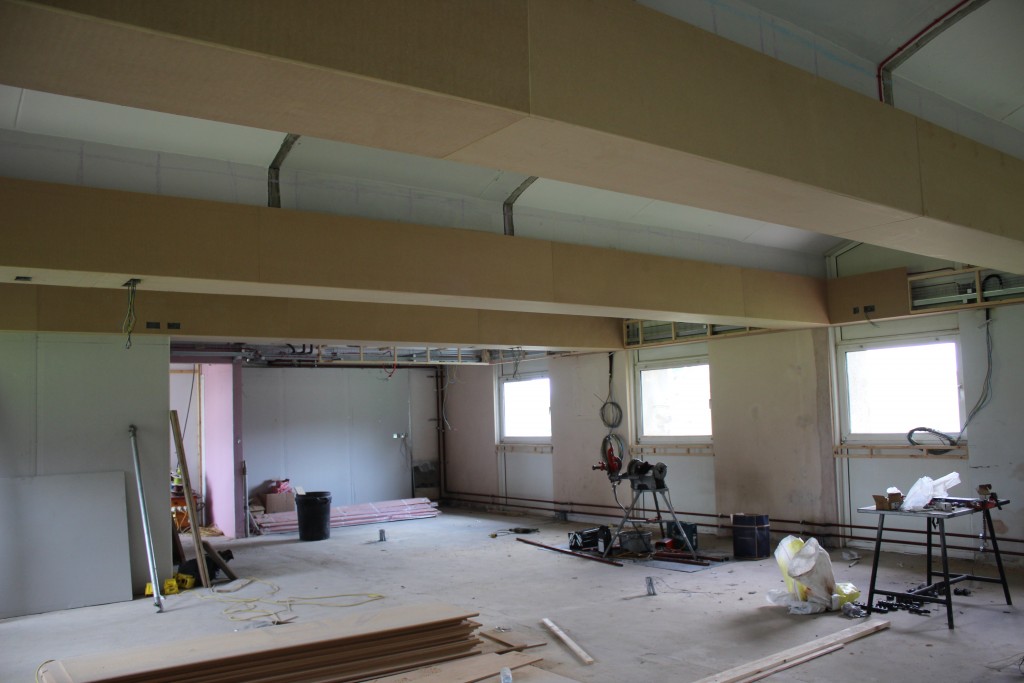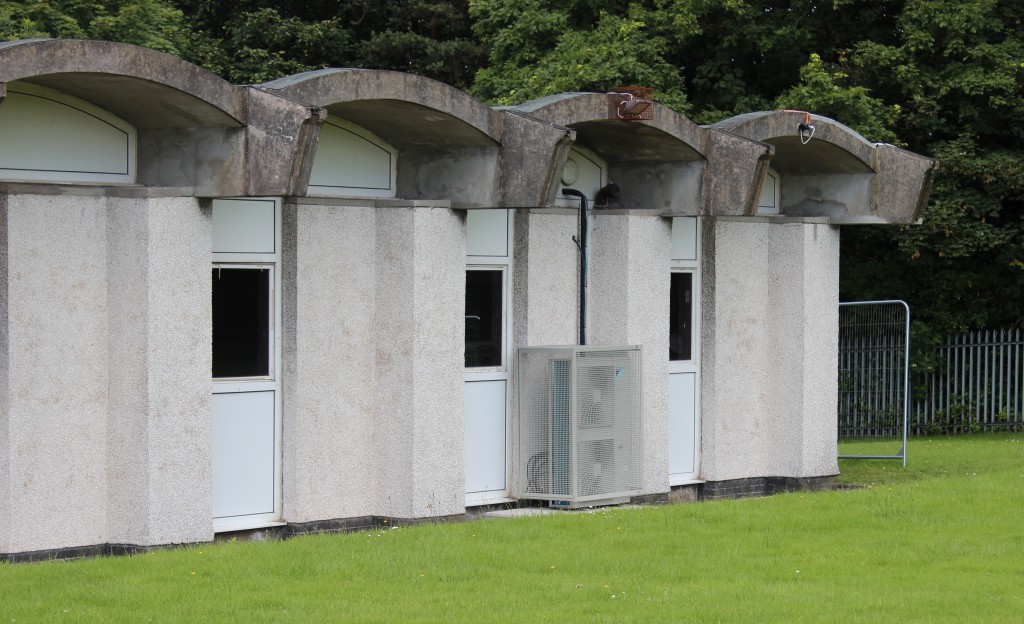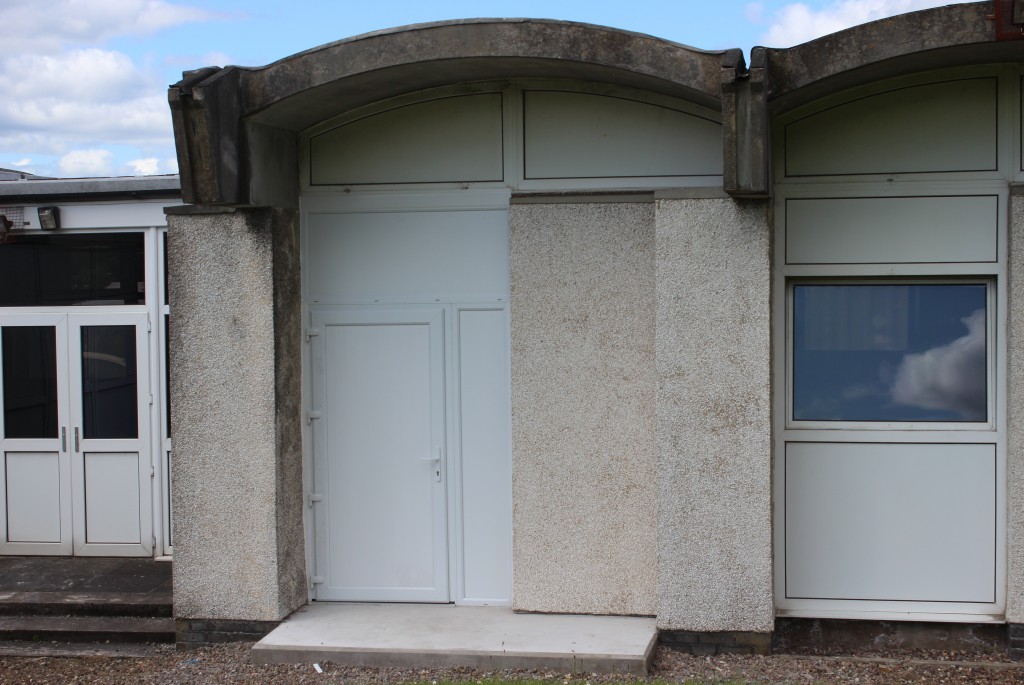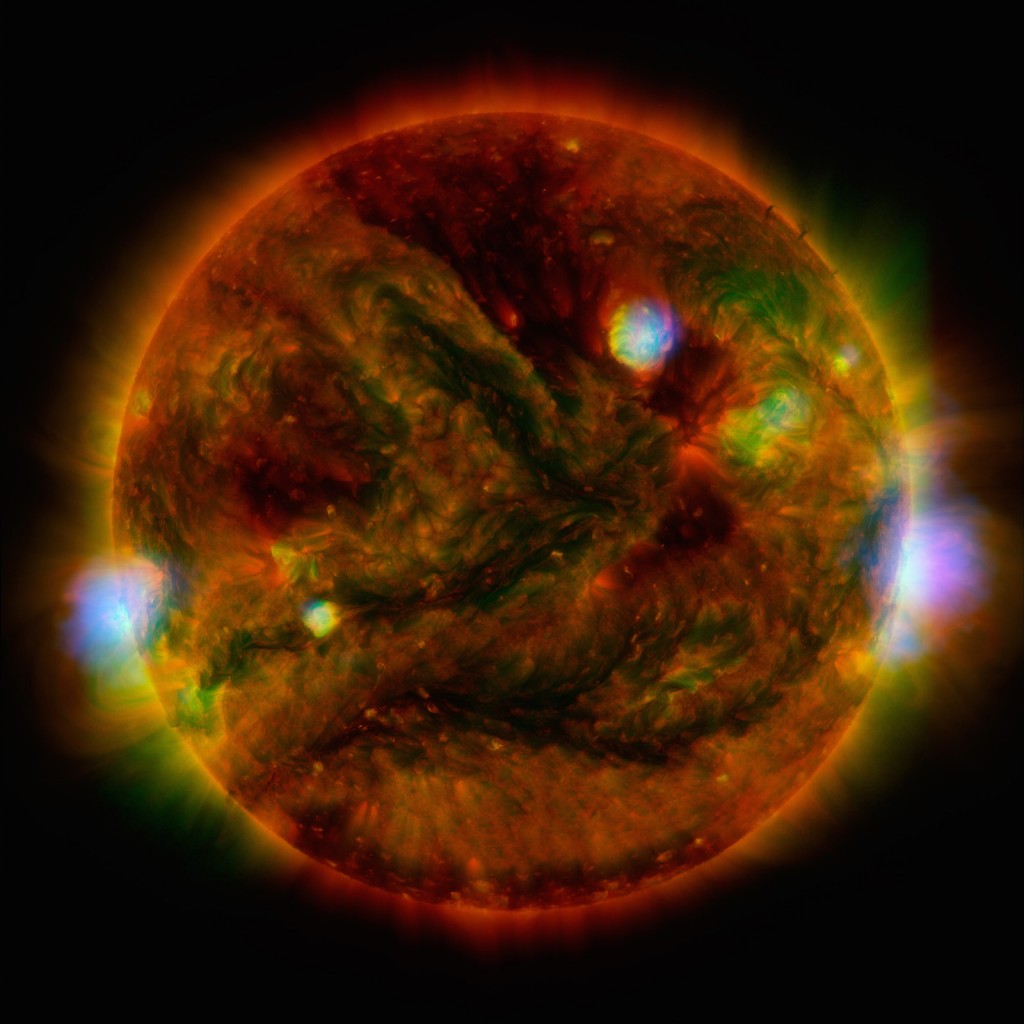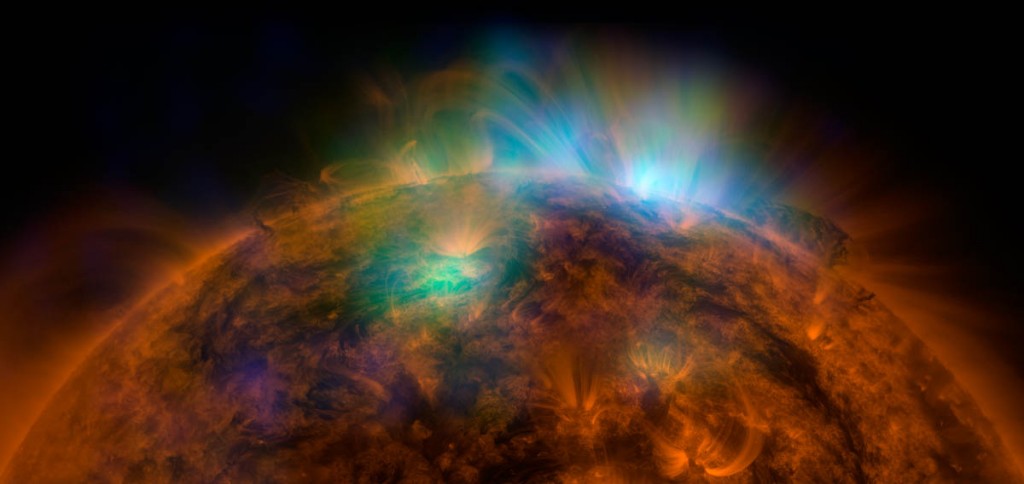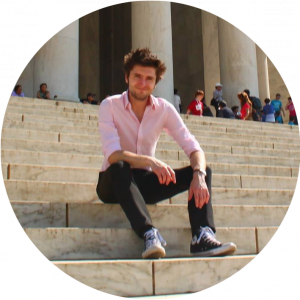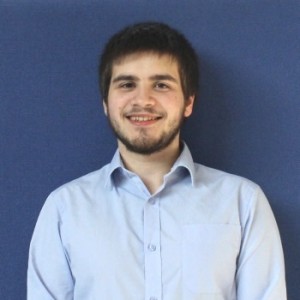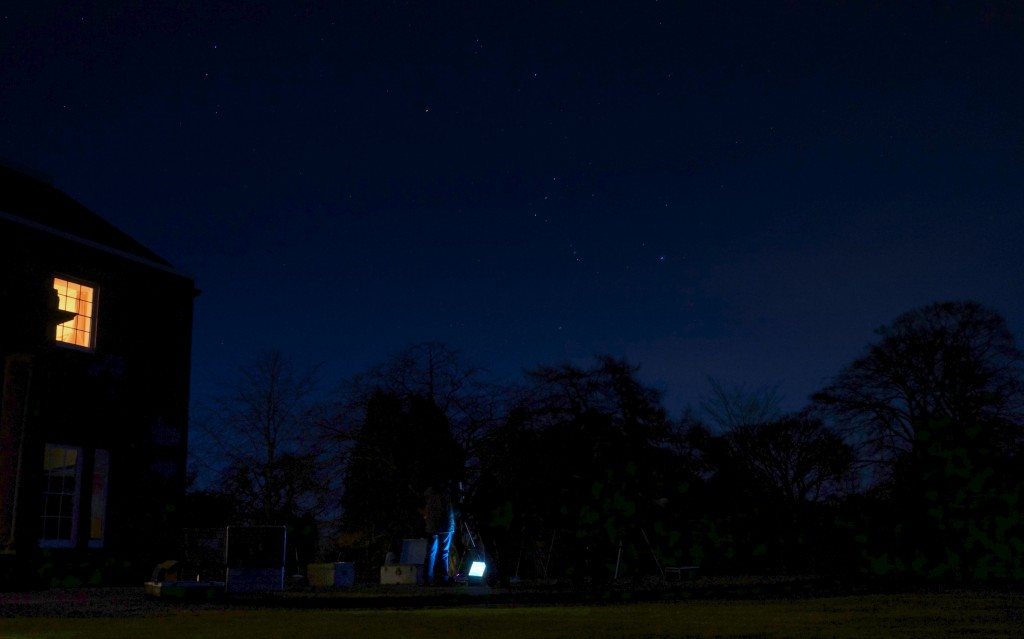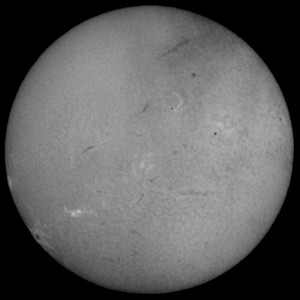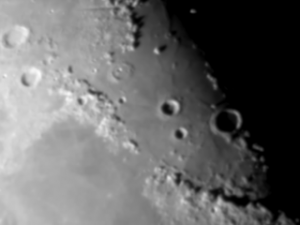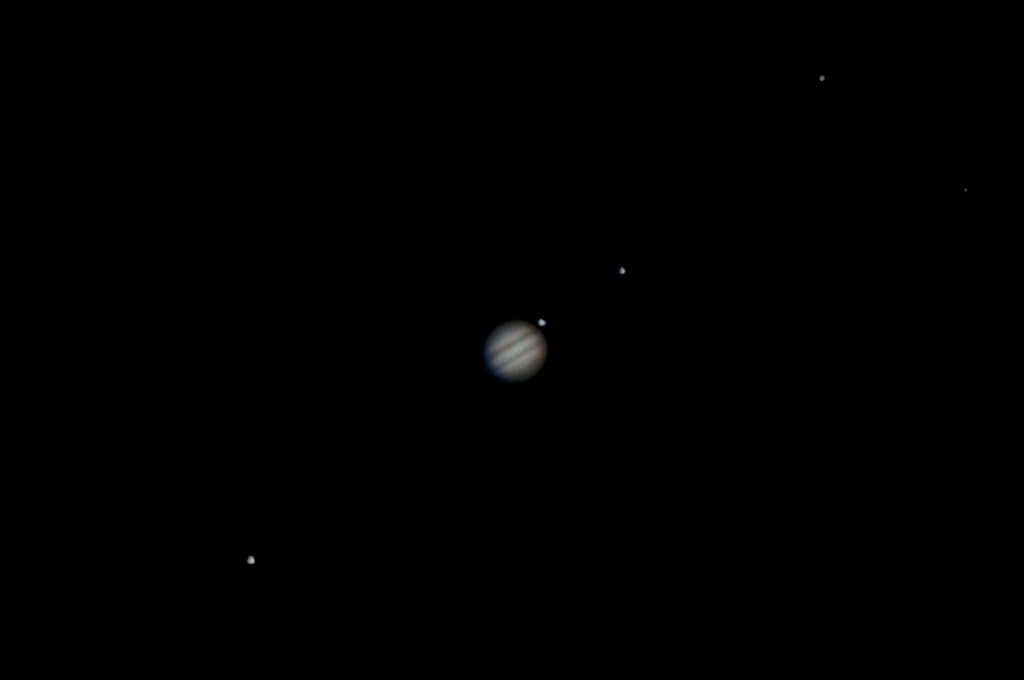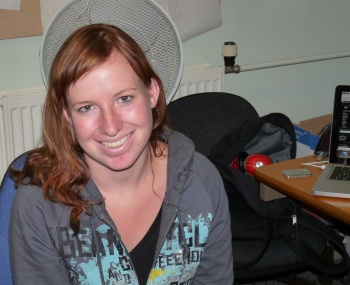The University’s observatory at Acre Rd is being refurbished over the summer – below are some photos showing the good progress that has been made. Lot’s has been done since the fifth, fourth, third, second and first set of pictures.
Author Archives: admin_astro
Observatory Refurb – Update 4
Observatory Refurb – Update 3
NASA Image of the Day
Work by A&A Group member Dr Iain Hannah has featured in a recent image/press release by the Royal Astronomical Society and NASA, showing an image of new X-ray observations of small flares (or microflares) taken with NASA’s NuSTAR telescope (blue in the image), combined with those in EUV from SDO/AIA (red/yellow) and lower energy X-rays from Hinode/XRT (green). This image recently featured as NASA’s image of the day.
First NuSTAR image of the Sun
Above is the first image of the Sun taken by NASA’s X-ray telescope NuSTAR. The blue and green are NuSTAR X-rays in 2-3 keV and 3-5 keV, overlaid onto EUV emission from SDO/AIA (red). This image was recently released and has featured on many news sites (BBC, Time, National Geographic, etc) and made it to the Astronomy picture of the day. A&A’s Dr. Iain Hannah and Dr. Hugh Hudson are part of the NuSTAR solar team that is using this X-ray telescope, that normally looks at distant blackholes, to probe faint signatures of heating and particle acceleration in the solar atmosphere.
Dr Juntao Wang
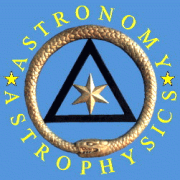
PhD Student
Room 614
School of Physics and Astronomy
Kelvin Building
University of Glasgow
G12 8QQ
Scotland
Email: j.wang.4@research.gla.ac.uk
Tel: +44 141 330 0855
Rhys Paterson
Dr Paul Wright
PhD Student
I am a final-year Ph.D. student studying the heating of non-flaring/micro-flaring active regions, supervised by Dr Iain Hannah.
My interests range from stellar to solar physics; my main interests lie in the heating of the solar atmosphere, including active regions and loops. I am currently gaining expertise in analysis of data from SDO/AIA, Hinode/XRT, Hinode/EIS, and NuSTAR.
eBook Chapters:
[1] Paul J. Wright et al 2018. DeepEM: A Deep Learning Approach to DEM Inversion
DeepEM is a (supervised) deep learning approach to DEM inversion that is currently under development on Github, and Figure 1 compares the solution from DeepEM to that of Basis Pursuit (Cheung et al 2015).
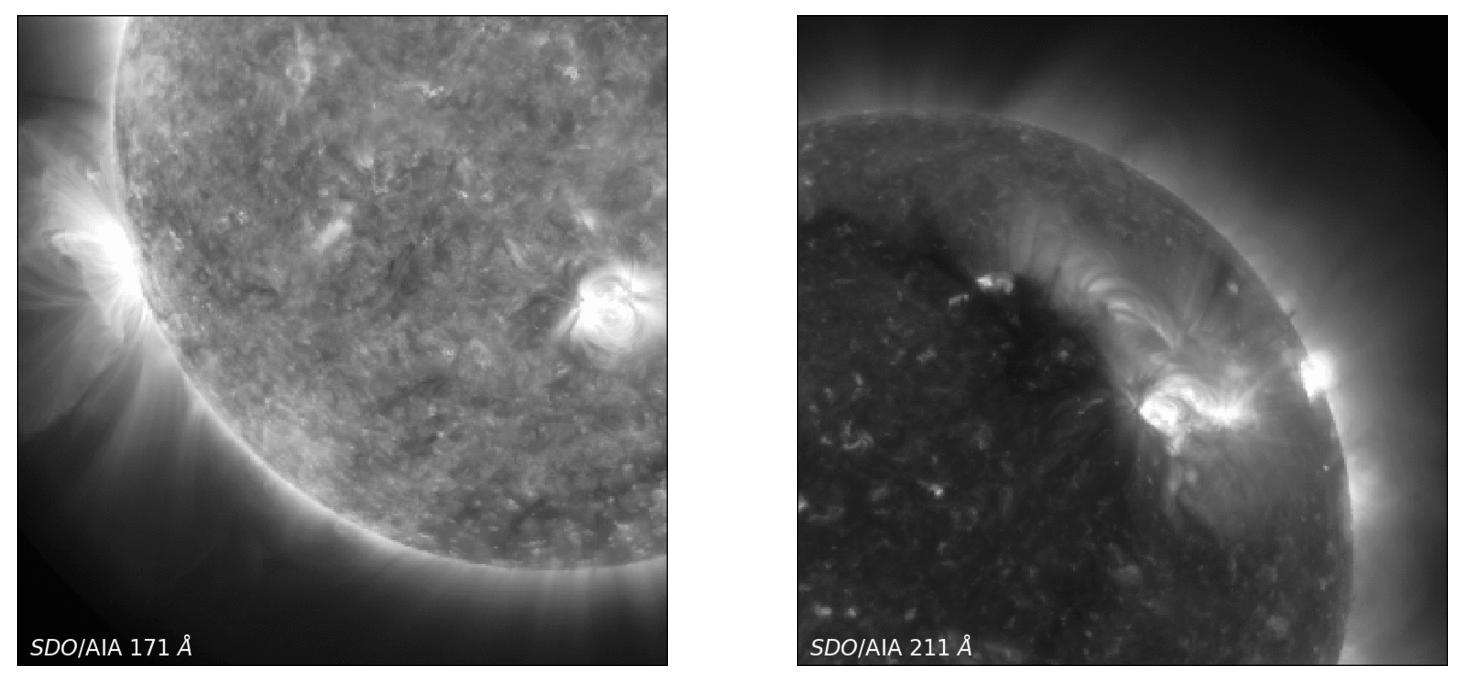
Figure 1: SDO/AIA images in 171 and 211 A (logT = 5.9, 6.3 K), vs the DeepEM and Basis Pursuit solutions for the same temperature.
[1] Andrew J. Marsh, David M. Smith, Lindsay Glesener, Iain G. Hannah, Brian W. Grefenstette, Amir Caspi, Sam Krucker, Hugh S. Hudson, Kristin K. Madsen, Stephen M. White, Matej Kuhar, Paul J. Wright, Steven E. Boggs, Finn E. Christensen, William W. Craig, Charles J. Hailey, Fiona A. Harrison, Daniel Stern, and William W. Zhang 2017. First NuSTAR Limits on Quiet Sun Hard X-Ray Transient Events, ApJ, 849 131
[2] Juntao Wang, Paulo J. A. Simoes, Natasha L. S. Jeffrey, Lyndsay Fletcher, Paul J. Wright, Iain G. Hannah 2017. Observations of Reconnection Flows in a Flare on The Solar Disk, ApJL, 847, L1
[3] Paul J. Wright, Iain G. Hannah, Brian W. Grefenstette, Lindsay Glesener, Säm Krucker, Hugh S. Hudson, David M. Smith, Andrew J. Marsh, Stephen M. White, and Matej Kuhar 2017.
Microflare Heating of a Solar Active Region Observed with NuSTAR, Hinode/XRT, and SDO/AIA, ApJ, 844, 132
[4] Matej Kuhar, Säm Krucker, Iain G. Hannah, Lindsay Glesener, Pascal Saint-Hilaire, Brian W. Grefenstette, Hugh S. Hudson, Stephen M. White, David M. Smith, Andrew J. Marsh, Paul J. Wright, Steven E. Boggs, Finn E. Christensen, William W. Craig, Charles J. Hailey, Fiona A. Harrison, Daniel Stern, and William W. Zhang 2017. Evidence of Significant Energy Input in the Late Phase of a Solar Flare from NuSTAR X-ray Observations, ApJ, 835, 6
A CV (pdf) can be found here.
Room 614
School of Physics and Astronomy
Kelvin Building
University of Glasgow
G12 8QQ
Scotland
Paul.Wright@glasgow.ac.uk
Tel: +44 141 330 8855 x0855
Fax: +44 141 330 8600
Dr Stephen Brown
I am working with Prof. Lyndsay Fletcher on solar flares. We are currently looking at the behaviour of the chromosphere during flares, with a particular focus on the hydrogen Lyman lines.
After using EVE observations to measure Doppler shifts in these lines, we found signatures of both plasma upflows and downflows. We are now using radiative hydrodynamic and radiative transfer codes, RADYN & RH, to produce simulated H Lyman profiles and understand their formation in the solar atmosphere. We have also bridged the gap between observations and simulations by performing synthetic observations of model line profiles obtained through flare simulations.
In 2016 I visited the NASA Goddard Space Flight Centre for 4 months to further this work, and presented our observations at the SDO Living With A Star conference in Burlington, VT. In 2017, I presented our findings from modelling at the Solar Physics Division conference in Portland, OR.
Publications:
Doppler speeds of the hydrogen Lyman lines in solar flares from EVE – Astronomy & Astrophysics -11/2016 – Stephen Brown, Lyndsay Fletcher & Nicolas Labrosse
Hydrogen Balmer Line Broadening in Solar and Stellar Flares – Astrophysical Journal – 2017 – Adam F Kowalski, Joel C Allred, Han Uitenbroek, Pier-Emmanuel Tremblay, Stephen Brown, Mats Carlsson, Rachel A Osten, John P Wisniewski, Suzanne L Hawley
Modelling of the Hydrogen Lyman Lines in Solar Flares – Astrophysical Journal – 07/2018 – Stephen Brown, Lyndsay Fletcher, Graham Kerr, Nicolas Labrosse, Adam Kowalski & Jaime De La Cruz Rodríguez
Room 604
School of Physics and Astronomy
Kelvin Building
University of Glasgow
G12 8QQ
Scotland
Email: s.brown.6@research.gla.ac.uk
Tel: +44 141 330 2960
Fax: +44 141 330 8600
Dr Ben Alcock

PhD Student
Room 604
School of Physics and Astronomy
Kelvin Building
University of Glasgow
G12 8QQ
Scotland
Email: b.alcock.1@research.gla.ac.uk
Tel: +44 141 330 2960
Fax: +44 141 330 8600
Brynley Pearlstone
Dr. Chris Messenger
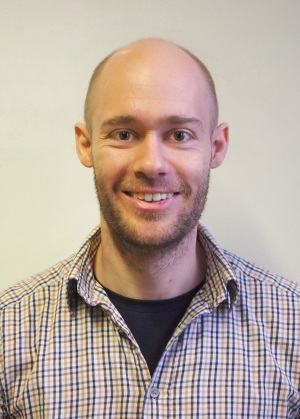
Research Fellow
Room 466
Tel: x3536
Email: Christopher.Messenger@glasgow.ac.uk
Research Interests: My work involves the analysis of gravitational wave data. I am specifically interested in wide area parameter space searches for gravitational waves from continuously emitting sources.
Dr Antonio Herrera Martin

PhD Student
Room 604
School of Physics and Astronomy
Kelvin Building
University of Glasgow
G12 8QQ
Scotland
Email: a.herrera-martin.1@research.gla.ac.uk
Tel: +44 141 330 2960
Fax: +44 141 330 8600
Dr Enrique Perez
Student 2014 trip to the Burn House
February 7-10th 2014 saw the annual Astronomy 2 observing trip to the Burn House, near Edzell. 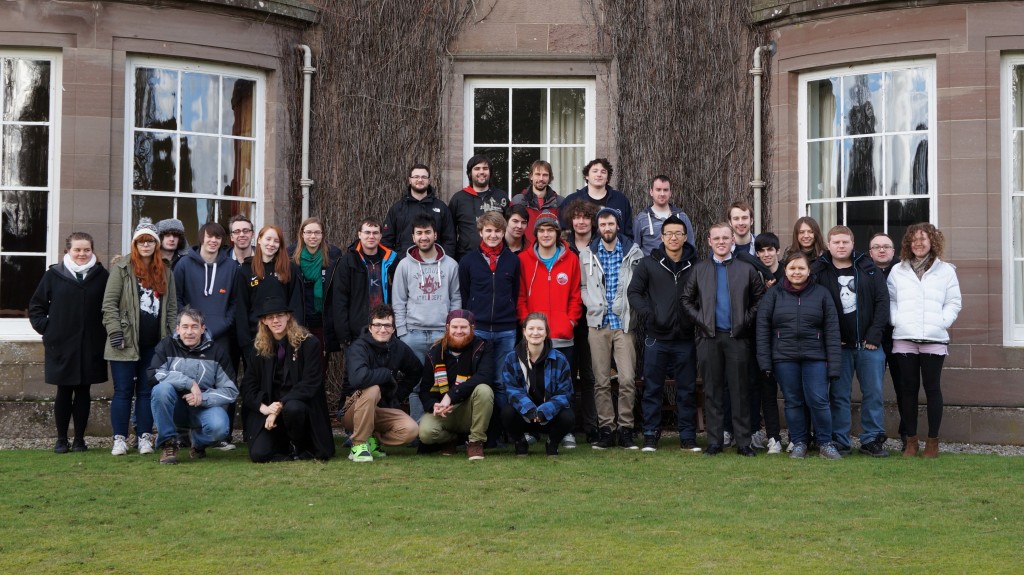
Despite some poor weather, both night and day/solar observing were achieved. And more importantly the weekend is booked for the February 2015 trip.
Dr Peter Levens

PhD Student
I am working with Dr. Nicolas Labrosse and Prof. Lyndsay Fletcher on solar tornado-like prominences – these features appear to be the rotating legs of prominences.
My research has mostly been using UV and EUV observations from the Hinode and IRIS satellites and the ground-based THEMIS telescope in the Canary Islands. In 2014 and 2015 I was part of an international team that coordinated and performed observations with Hinode, IRIS, and THEMIS. I had the opportunity to spend four weeks making observations of prominences at THEMIS as part of that campaign. I also spent four months at the Observatoire de Paris in Meudon, working with Dr. Brigitte Schmieder on analysing IRIS data that we gathered in 2014.
I have also spent some time developing a radiative transfer code that simulates the emission of ionised magnesium (Mg II) lines in prominences. This work has built upon the already-substantial code for modelling hydrogen, helium, and calcium in prominences, provided to me by Dr. Nicolas Labrosse. The aim of this work was to extend previous prominence Mg II models to explain recent IRIS observations.
I am currently at the end of my PhD, writing my thesis.
Publications:
“Comparing UV/EUV line parameters and magnetic field in a quiescent prominence with tornadoes” — P. J. Levens, N. Labrosse, B. Schmieder, A. López Ariste, L.Fletcher. 2017, Astronomy and Astrophysics, (accepted, awaiting publication) [doi] [arXiv]
“Reconstruction of a helical prominence in 3D from IRIS spectra and images” — B. Schmieder, M. Zapiór, A. López Ariste, P. J. Levens, N. Labrosse, R. Gravet. 2017, Astronomy and Astrophysics, (accepted, awaiting publication) [doi] [arXiv]
“Halpha Doppler shifts in a tornado in the solar corona” — B. Schmieder, P. Mein, N. Mein P. J. Levens, N. Labrosse, L. Ofman. 2017, Astronomy and Astrophysics, 597, A109 [doi] [arXiv]
“Magnetic Field in Atypical Prominence Structures: Bubble, Tornado, and Eruption” — P. J. Levens, B. Schmieder, A. López Ariste, N. Labrosse, K. Dalmasse, B. Gelly. 2016, The Astrophysical Journal, 826, 164L [doi] [arXiv]
“Structure of Prominence Legs: Plasma and Magnetic Field” — P. J. Levens, B. Schmieder, N. Labrosse, A. López Ariste. 2016, The Astrophysical Journal, 818, 31L [doi] [arXiv]
“A solar tornado observed by EIS: Plasma diagnostics” — P. J. Levens, N. Labrosse, L.Fletcher, B. Schmieder. 2015, Astronomy and Astrophysics, 582, A27 [doi] [arXiv]
Conference proceedings:
“Prominence and tornado dynamics observed with IRIS and THEMIS” — B. Schmieder, P. J. Levens, N. Labrosse, P. Mein, A. López Ariste, M. Zapiór. 2017, American Astronomical Society, SPD meeting No. 48
“Prominence plasma and magnetic field structure – A coordinated observation with IRIS, Hinode and THEMIS” — B. Schmieder, N. Labrosse, P. J. Levens, A. López Ariste. 2016, 41st COSPAR Scientific Assembly
“Magnetic Field and Plasma Diagnostics from Coordinated Prominence Observations” — B. Schmieder, P. J. Levens, K. Dalmasse, N. Mein, P. Mein, A. López Ariste, N. Labrosse, P. Heinzel. 2016, Astronomical Society of the Pacific, ASP Conference Series, Vol. 504
“Polarimetric measurements in prominences and “tornadoes” observed by THEMIS” — B. Schmieder, A. López Ariste, P. J. Levens, N. Labrosse, K. Dalmasse. 2014, Proceedings of the International Astronomical Union, IAU Symposium No. 305
Contact information:
Room 604
School of Physics and Astronomy
Kelvin Building
University of Glasgow
G12 8QQ
Scotland
Email: p.levens.1@research.gla.ac.uk
Tel: +44 141 330 2960
Dr Hamish Reid
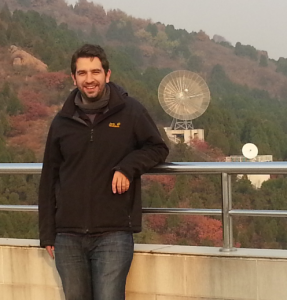
My research efforts are focussed towards the active Sun, in particular with flares and electron beams. To investigate this phenomena I use multi-wavelength observational studies with a particular focus on radio and X-ray wavelengths. I also use numerical simulations to model electron transport including the kinetic plasma processes that are involved with generating the radio emission we observe in space weather.
Room 608
School of Physics and Astronomy
Kelvin Building
University of Glasgow
G12 8QQ
Scotland
Email: hamish.reid@glasgow.ac.uk
Tel: +44 141 330 5388
Fax: +44 141 330 8600
Dr Salma Islam

PhD Student
I am working with Prof. Martin Hendry.
Room 604
School of Physics and Astronomy
Kelvin Building
University of Glasgow
G12 8QQ
Scotland
Email: s.islam.1@research.gla.ac.uk
Tel: +44 141 330 2960
Fax: +44 141 330 8600
Dr Duncan Stackhouse

PhD Student
I work on electron acceleration in Solar Flares. Taking a particular interest in the distribution of these electrons and processes behind the acceleration.
Room 604
School of Physics and Astronomy
Kelvin Building
University of Glasgow
G12 8QQ
Scotland
Email: d.stackhouse.1@research.gla.ac.uk
Tel: 2960
Fax: +44 141 330 8600
Dr Graham Kerr
 PhD Student
PhD Student
I have now completed my PhD, which was supervised by Prof Lyndsay Fletcher, and am about to start a postdoctoral fellowship at NASA’s Goddard Space Flight Center (~April 2017).
My research interests are in solar physics, particularly in energy and radiation transport through the solar atmosphere during solar flares. I have expertise in data analysis using both imaging and spectroscopic observations from the Hinode, IRIS and SDO spacecraft, as well as using the numerical codes RADYN and RH to simulate solar flares, and the radiation they produce. I am eager to use a combination of both observations and numerical simulations to better understand the processes involved in solar flares.
Publications
“Simulations of the Mg II k and Ca II 8542 lines from an Alfvén Wave-heated flare chromosphere”, G.S. Kerr, L. Fletcher, A.J.B. Russell, & J.C. Allred. The Astrophysical Journal, vol. 827 (2), 2016. [doi]
“IRIS Observations of the Mg II h & k Lines During a Solar Flare”, G.S. Kerr, P.J.A. Simões, J. Qiu & L. Fletcher. Astronomy and Astrophysics, vol. 582 (A50), 2015. [doi]
“The Radiated Energy Budget of Chromospheric Plasma in a Major Solar Flare Deduced from Multi-Wavelength Observations”, R.O. Milligan, G.S. Kerr, B.R. Dennis, H.S. Hudson, L. Fletcher, J.C. Allred, P.C. Chamberlin, J. Ireland, M. Mathioudakis, & F.P. Keenan. The Astrophysical Journal, vol. 793 (2), 2014. [doi]
“Physical Properties of White-Light Sources in the 2011 Feb 15 Solar Flare”, G.S. Kerr & L. Fletcher. The Astrophysical Journal, vol. 783 (2), 2014. [doi]
“Hard X-ray and Ultraviolet Observations of the 2005 January 15 Two Ribbon Flare”, J. Cheng, G.S Kerr, & J. Qiu. The Astrophysical Journal, vol. 744 (1), 2012. [doi]
Conference Proceedings
“Observations and modelling of Helium lines in solar flares”, P.J.A. Simões, L. Fletcher, N. Labrosse, & G.S. Kerr. In: Coimbra Solar Physics Meeting 2015: Ground-based Solar Observations in the Space Instrumentation Era. ASP Conference Series, Vol. 504, 2016.
A C.V can be found here.
I am active in public outreach, and throughout the 2015-2016 academic year I worked with St. Vincent’s Primary School in East Kilbride as part of the Rolls-Royce Science Prize. Our team was awarded second place with a project that was focused on the ‘Earth in Space’. To learn more about our entry click here.
Room 604
School of Physics and Astronomy
Kelvin Building
University of Glasgow
G12 8QQ
Scotland
Email: Graham.s.kerr@nasa.gov
Tel: +44 141 330 2960
Dr. Craig Stark

Now based at the University of St. Andrews
Dr Marina Battaglia

Now working at the University of Applied Sciences and Arts Northwestern Switzerland.
I am interested in particle acceleration and propagation processes in solar flares. I use satellite data, mainly from RHESSI to better understand the physics of those processes.
Email: marina.battaglia.astro@gmail.com
Personal homepage
(the contents of which are the responsibility of Marina Battaglia)
Dr Erin MacDonald
Dr Matthew Pitkin
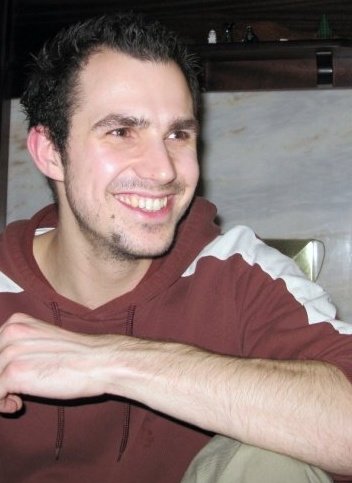
Research Fellow
Room 464
Tel: x7168
Email: Matthew.Pitkin@glasgow.ac.uk
Research Interests: My research involves targeted searches for gravitational waves from known pulsars using GEO 600 and LIGO data. My work also includes searches for quasi-normal mode oscillations in neutron stars induced by glitches.
Dr Luis Teodoro

Honorary Research Fellow
Now at NASA Ames, CA
